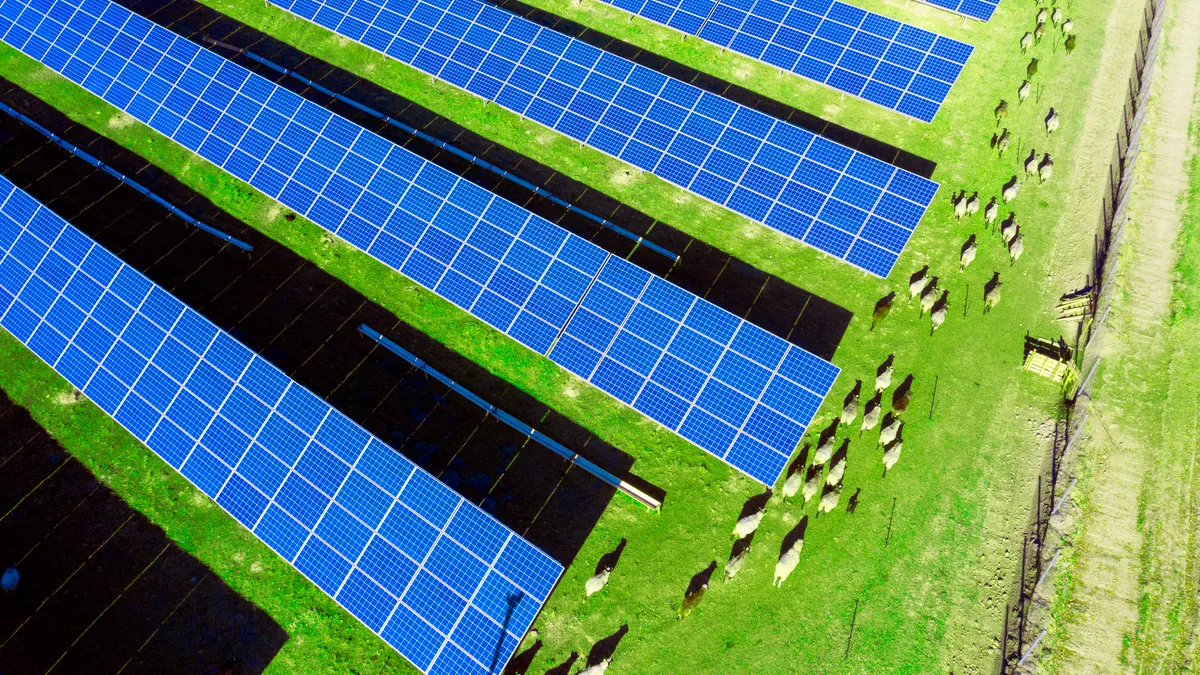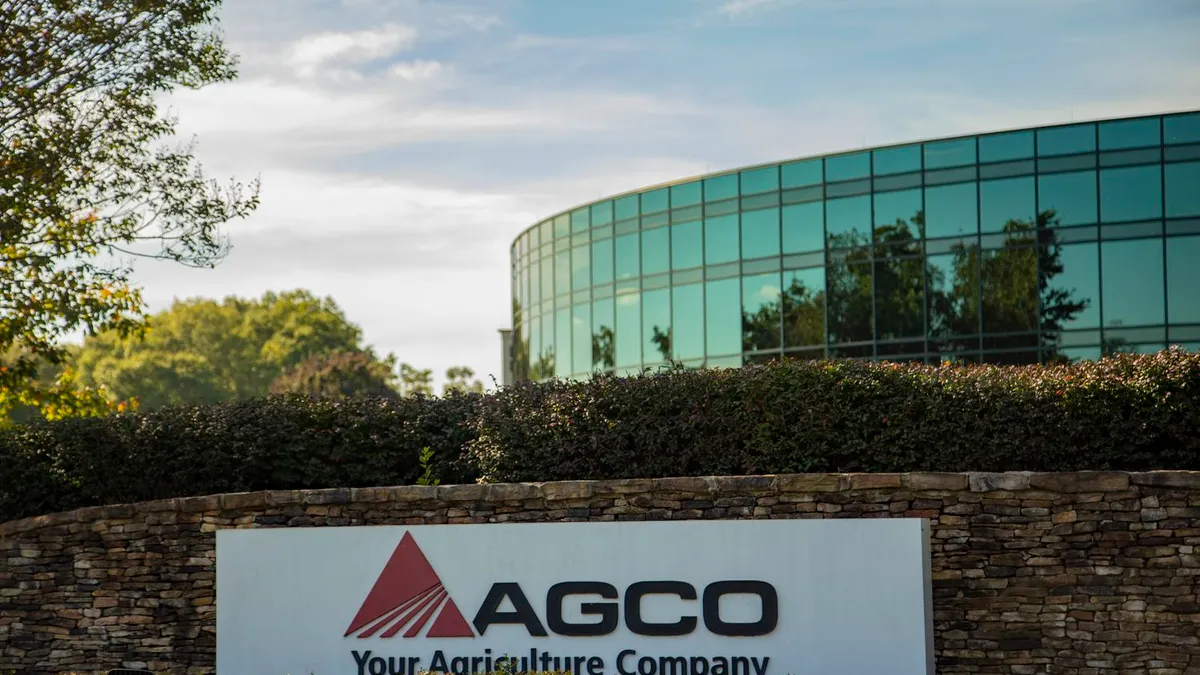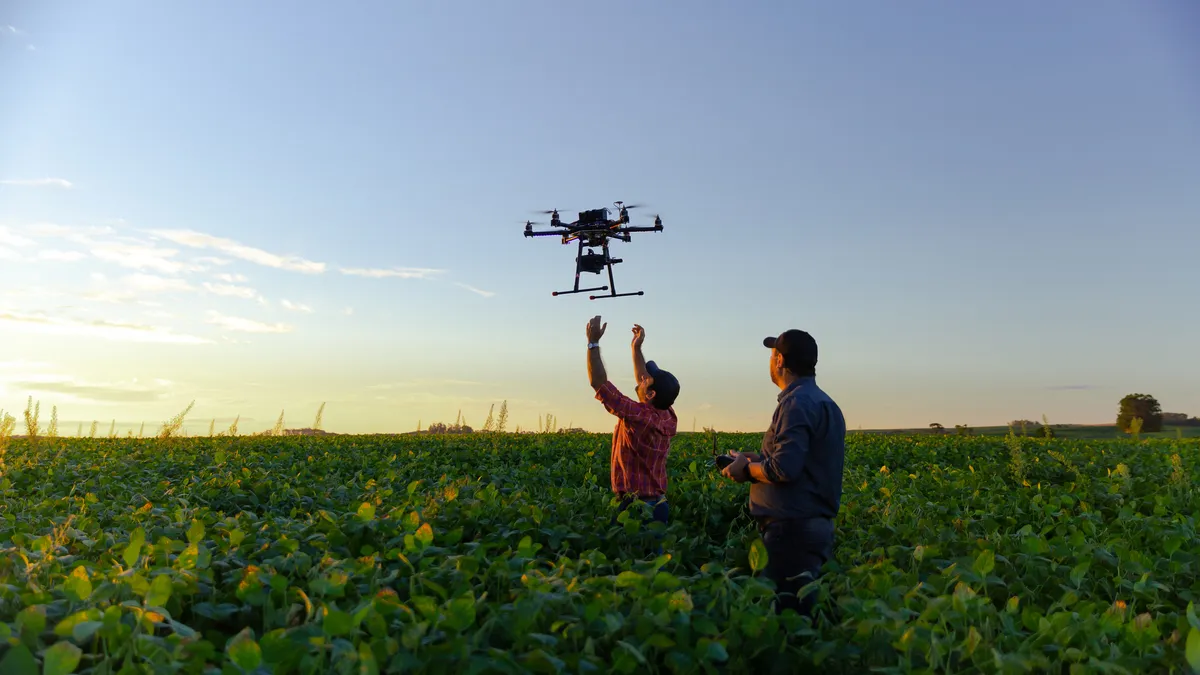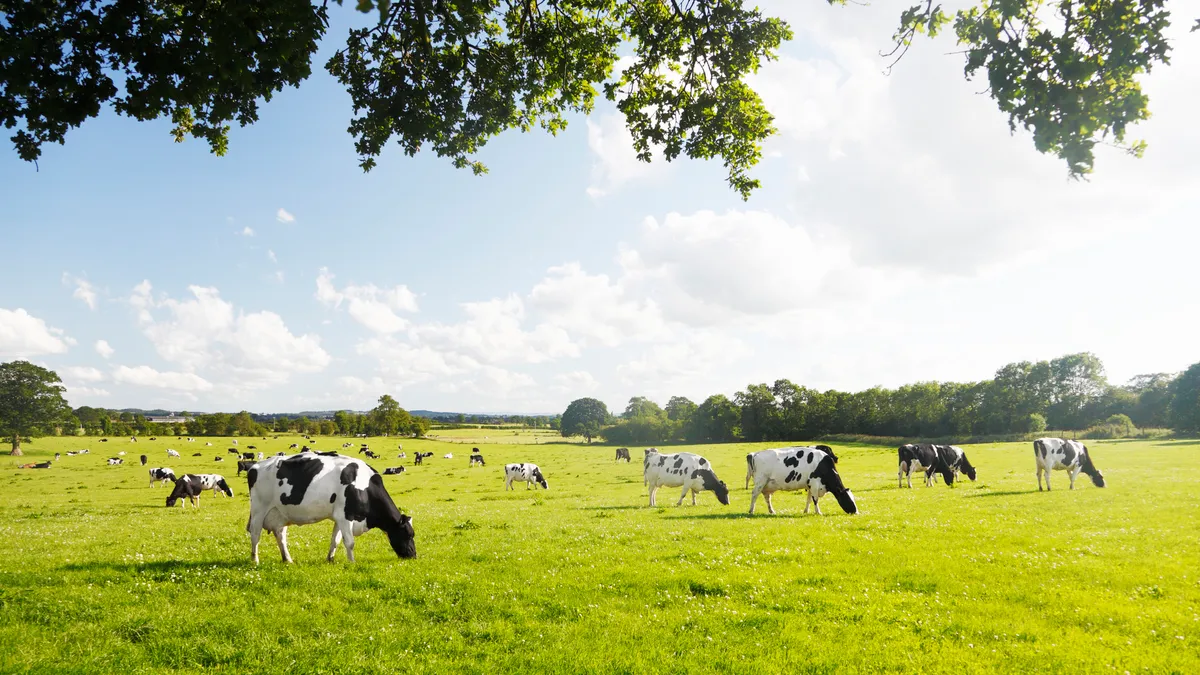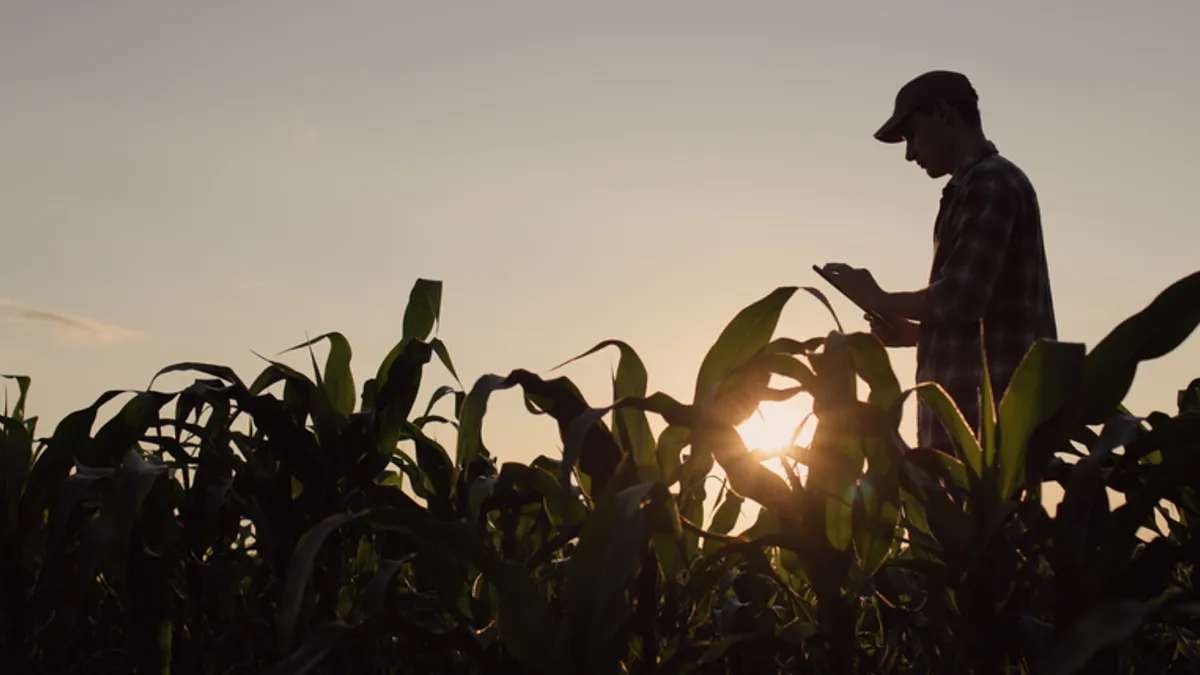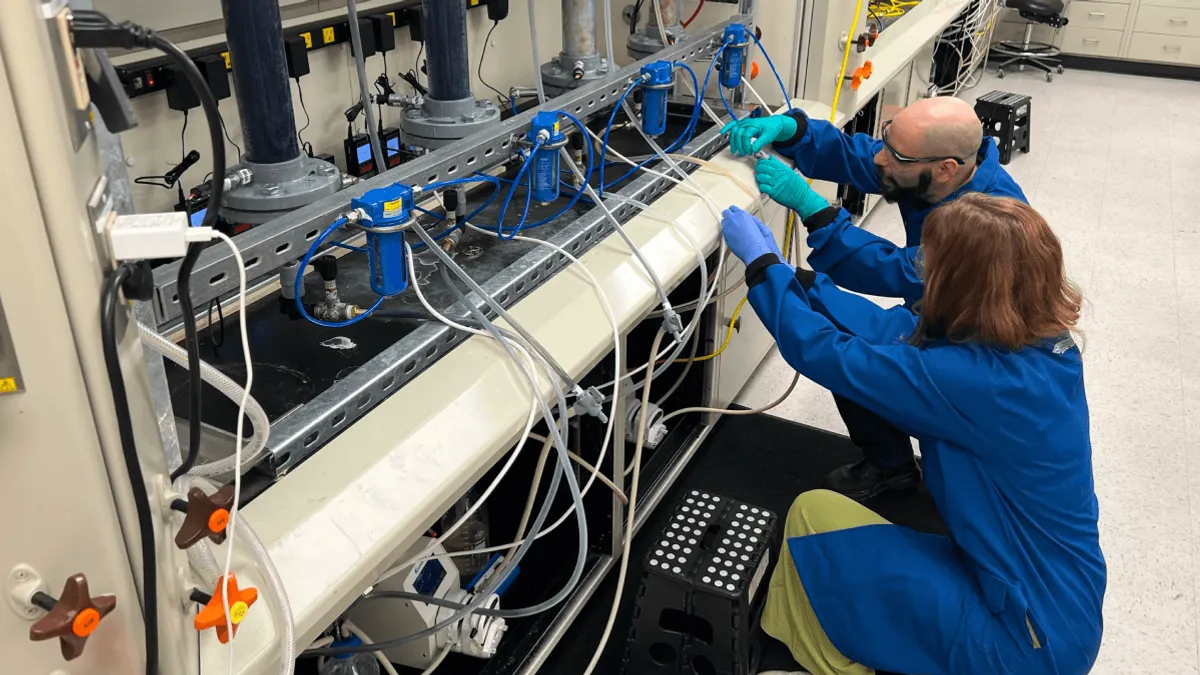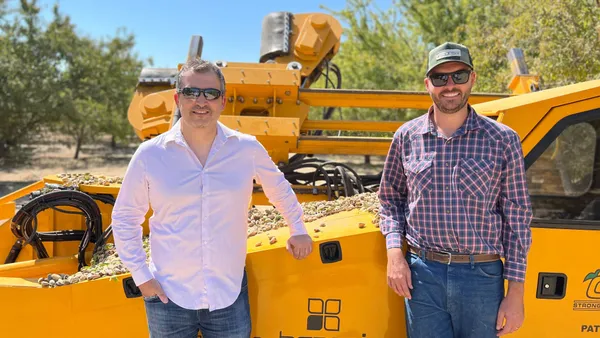Building out solar panels on farms has been seen as a major part of accelerating renewable energy transition in the U.S., but a contentious proposal in Maine to raise fees on developers who build on agricultural land shows the difficulty of expanding clean energy production even in states with leading emissions reductions goals.
Maine is considered one of the leading states in the growing practice of agrivoltaics, or the dual use of land for food and solar energy production. In 2021, a 10-acre blueberry farm in the southeastern city of Rockport became the largest agrivoltaics site in the country, and was seen as a litmus test for determining whether co-locating solar panels on farmland is economically viable.
Ultimately, the site didn't live up to its promises: University of Maine Cooperative Extension specialist Lily Calderwood, who helped oversee the project as part of a pilot program, told local paper The Maine Monitor that the shade from solar panels ultimately constrained production on the farm and raised costs by requiring farmers to deploy smaller, more specialized equipment.
“At the end of the day, it’s not economical for a blueberry farmer to do dual-use at the moment because of the shading and all of these logistics,” Calderwood told the paper. “They’re not even going to make money on the field because (the plants) are shaded.”
Now, as the state looks to simultaneously increase local farming production by the end of the decade and transition to 100% clean energy by 2040, it's finding itself in a difficult balancing act of protecting productive agricultural land while still encouraging renewable development. Maine's Department of Agriculture, Conservation and Forestry is drafting rules at the direction of the state legislature that would charge developers an extra fee for building renewable projects on more than five acres of “high-value agricultural soils."
While some worry the existing energy infrastructure is not reliable enough for the demand of solar and have concerns about the loss of high quality farmland, there are farmers who have had massive success adding solar capturing arrays to portions of their acreage.
Evelyn Norton owns Southern Farm in Livermore Falls, Maine, with her sister; the farm has been in their family for generations. Prior to the passing of her 99-year-old father, they made the decision to dedicate 15% of their 135 acres to solar arrays in 2021.
“He always said that the farm, over the years, had to make changes depending on what the situations were,” Norton says of her father. “To him, this was just another change taking place on the farm. He said that he had always farmed with the sun … but now he was basically just farming sunshine, with the benefits going to many.”
The roughly 14,000-panel array on the Norton’s farm produces around 6,478,200 kilowatt hours of clean energy annually, with the majority powering five local schools. Norton says this is especially meaningful to the family because her mother was a teacher.
Solar panels have allowed the family to receive a predictable, additional revenue stream from the energy produced by the array on their property, even in years like 2023 when their hay crops struggled due to heavy rains. Thanks to the income from solar, Norton says her family was able to fix their farm’s expensive furnace when it broke down.
“It gives us that cushion to know that the farm is protected,” Norton said. “It's just a great security.”
ReVision Energy, the company that created and installed Norton’s solar array, says increased state fees could jeopardize projects like this in the future. The rules also jeopardize the state's ability to reach its clean energy goals, which includes a target for the state to use 80% renewable energy by 2030.
“The more permitting or cost implications we put up, the harder we make it to reach those goals, which impacts all of us,” said Lindsay Bourgoine, ReVision Energy’s director of policy and government affairs.
Decarbonizing the electric sector by 2050 will require dedicating around 10 million acres of land to solar energy generation, according to the Department of Energy. While that's a small fraction of the country's surface area, acquiring the right type of land has proved a challenge, as developers need large tracts of flat land with access to transmission.
Farmland is often favored by solar developers because it is flat, sunny, cleared, and near energy infrastructure, according to the American Farmland Trust, an organization dedicated to protecting agricultural land. The group estimates 83% of new solar energy development is likely to take place on farmland unless policymakers take steps to prioritize food production.
AFT has held up Maine's fees on solar development as a model for other states in building out renewable energy while protecting valuable farmland, and the group has called on Congress to study the impact of solar conversion on farmland. The Senate farm bill proposal includes a measure directing agency leaders to develop a blueprint on how agriculture producers and solar developers can accelerate renewable development while preserving soil health.
“The key question for our national solar buildout is not ‘if,’ but ‘how,’” AFT Policy Director Tim Fink said last May. “The decisions we make today on how we achieve this critical climate goal will determine whether it strengthens rural communities and protects our best agricultural land for future generations or results in large-scale permanent conversion of productive agricultural land.”


